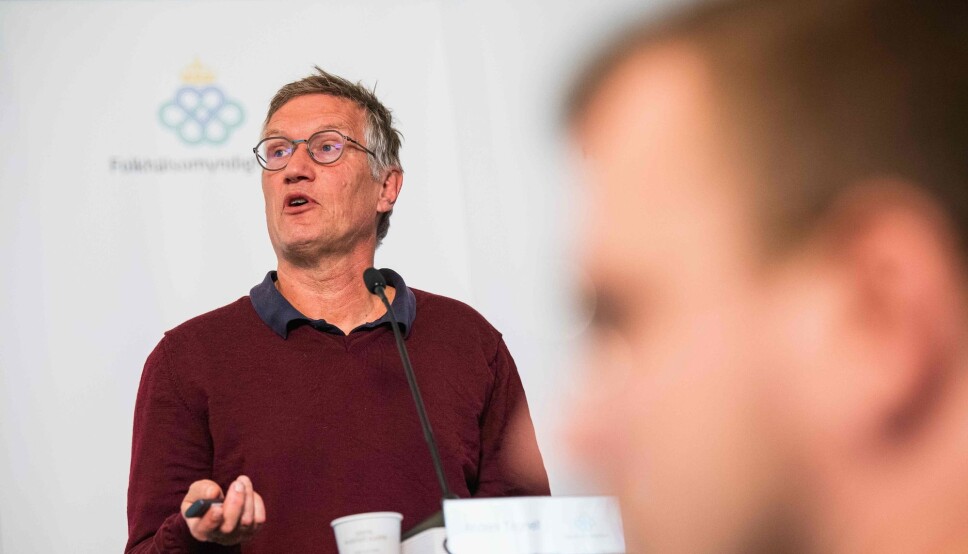This article is produced and financed by the NHH - Norwegian School of Economics - read more

Comparing Norway and Sweden: Norwegian coronavirus measures reduced hospitalizations drastically
The lockdown in Norway has been successful in reducing the pressure on the healthcare system. If Norway would have followed the more lenient Swedish response, the peak number of COVID19 hospitalizations would have been three times higher.
"A Swedish solution in both Denmark and Norway would have brought the two countries closer to their maximum capacity. The burden on healthcare systems would have been much worse, than the situation is today", Associate Professor at NHH Floris Zoutman says.
Zoutman and Steffen Juranek, both researchers at the Department of Business and Management Science (NHH), recently did a study on Covid-19. In their working paper The Effect of Social Distancing Measures on Intensive Care Occupancy: Evidence on COVID-19 in Scandinavia they evaluate the lockdown in Norway and Denmark in terms of hospitalizations and deaths.
Three times as many patients
Whereas Denmark and Norway imposed fairly strict measures against the spreading of the coronavirus, Sweden follows an extraordinarily lenient approach.
Comparing Norway and Denmark to Sweden, the lockdown measures have been dramatically effective in reducing the pressure on the healthcare system. If Norway and Denmark would have followed the Swedish example, Norway would, at the peak, have had more than three times as many COVID19-patients in hospitals. Denmark would have experienced an increase of 133 per cent.
"The demand for intensive care beds would have also been significantly higher. At the peak, Norway would have had nearly two and a half times as many patients in intensive care at the same time. In Denmark it would have been a little more than twice the number", Juranek says.
Reducing deaths
Social distancing has also been effective in reducing COVID19-related deaths. Up to April 21st, Denmark would have experienced 2.5 times the number of deaths had they decided to keep the economy open. The effect on deaths in Norway appears even higher, though the estimates are more uncertain.
"What is your conclusion on the Norwegian approach?"
"Our results show that social distancing measures are effective in reducing the stress in the healthcare system, and in reducing the deaths caused by the virus. Whether the benefits outweigh the costs requires additional analysis", say Zoutman and Juranek.
Numbers diverge dramatically
In their study, Juranek and Zoutman compare the number of patients in hospital, in intensive care and deaths for the three Scandinavian countries. They are using the similarity of the three countries in cultural, economic and political terms, and argue that conditions for the spread of the virus are similar in the three countries.
"In their political reaction towards the virus, Sweden has become famous for moving along their own path, and did not impose similarly strict measures as Norway and Denmark. We compare the course of the pandemic in the three countries and observe a very similar pattern until roughly two weeks into the lockdown."
Afterwards, the numbers diverge dramatically with much higher pressure on the healthcare system in Sweden.
"This allows us to estimate the numbers for Denmark and Norway if they would have followed the Swedish course instead of imposing a strict lockdown."
Crucial to understand
"Why is this an important study?"
"One of the primary reasons for introducing strict social distancing measures is to relieve the pressure on the healthcare system. Through social distancing, we ensure that the peak number of patients in hospitals does not exceed the available capacity. Our study shows that the approach in Denmark and Norway has been effective", Juranek says.
Zoutman adds:
"The social distancing measures affect the daily life of nearly all of us, kindergartens and schools were until recently closed, and many have to work from home. Some of the social distancing measures also restrict our basic rights such as the right of children to go to school. In addition, many workers lost their jobs. This is a high burden for many of us. It is crucial to understand whether, and to what extent, these costly measures have been successful in their intended purpose."


































